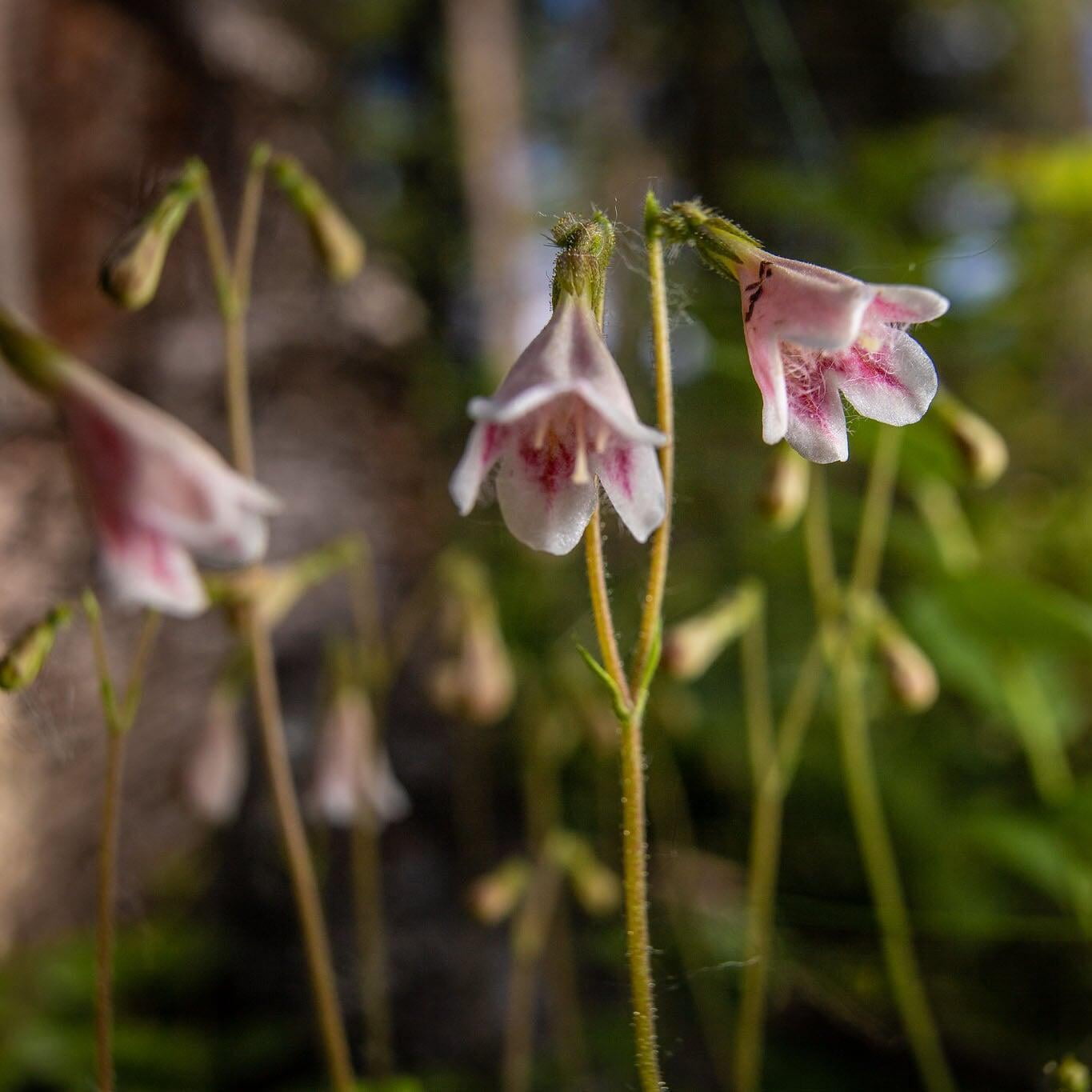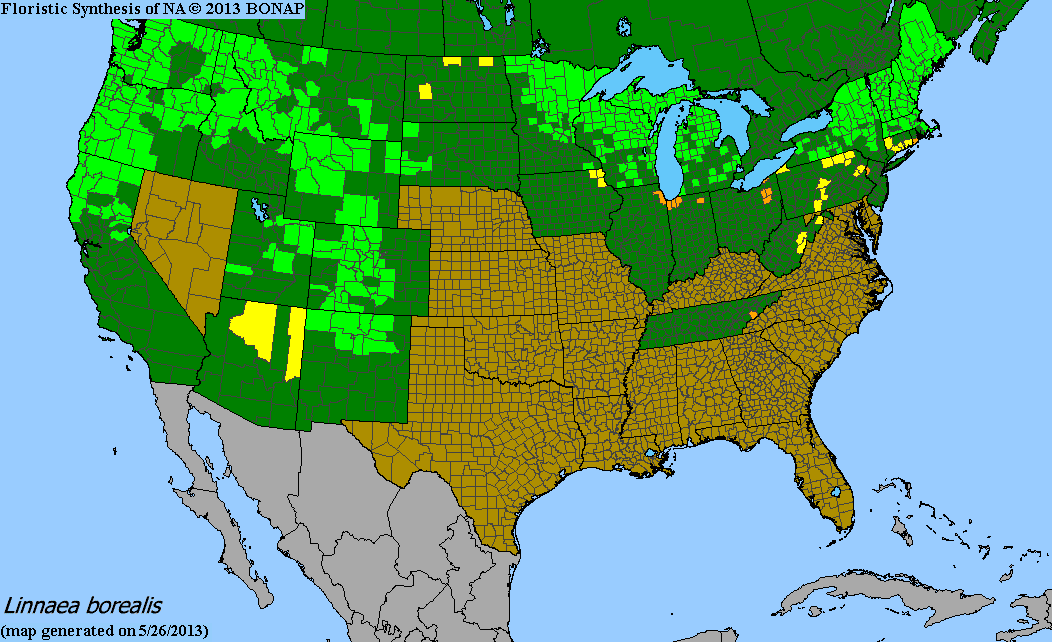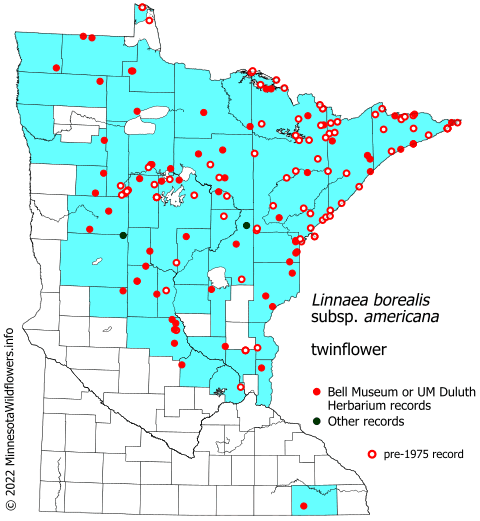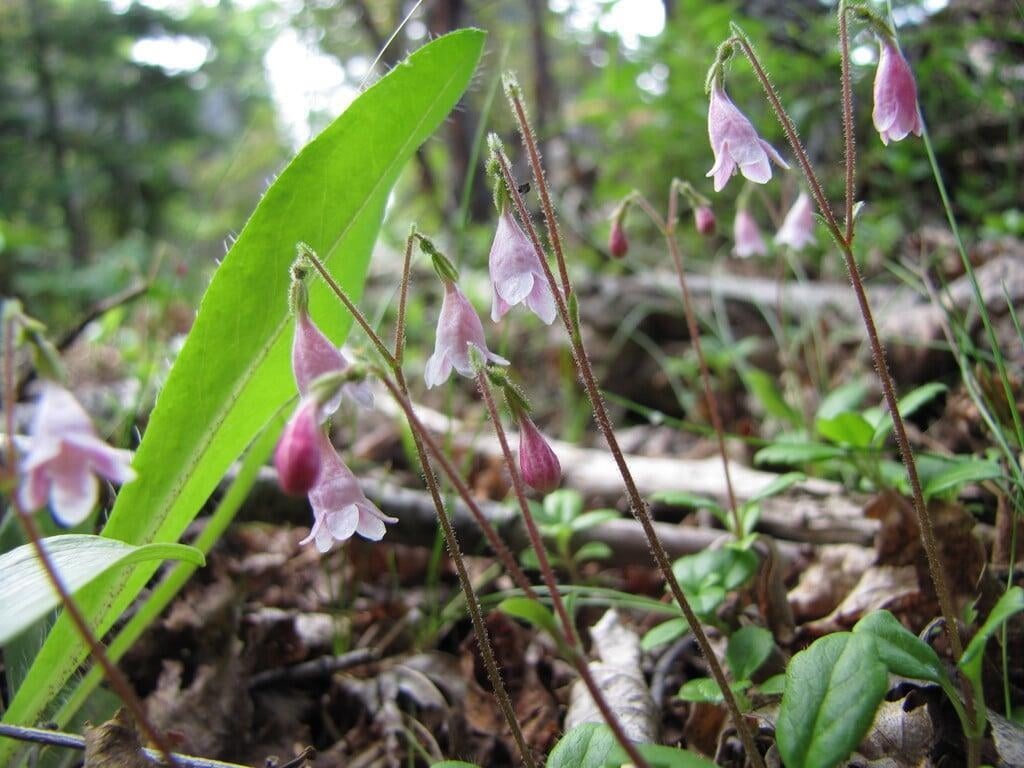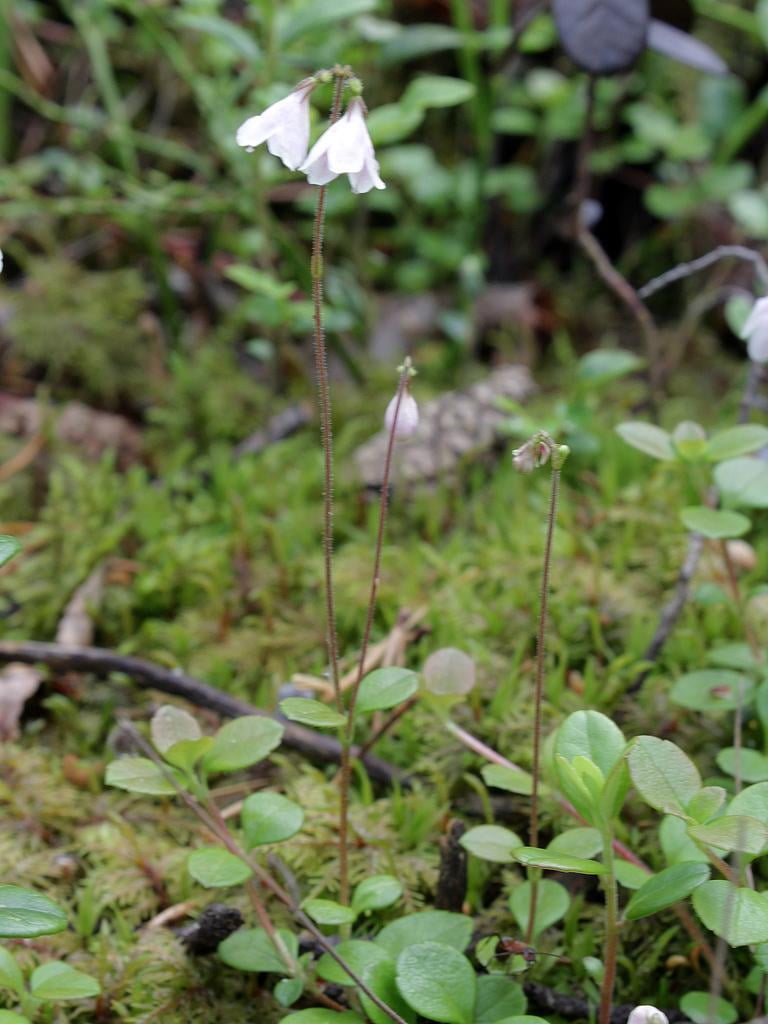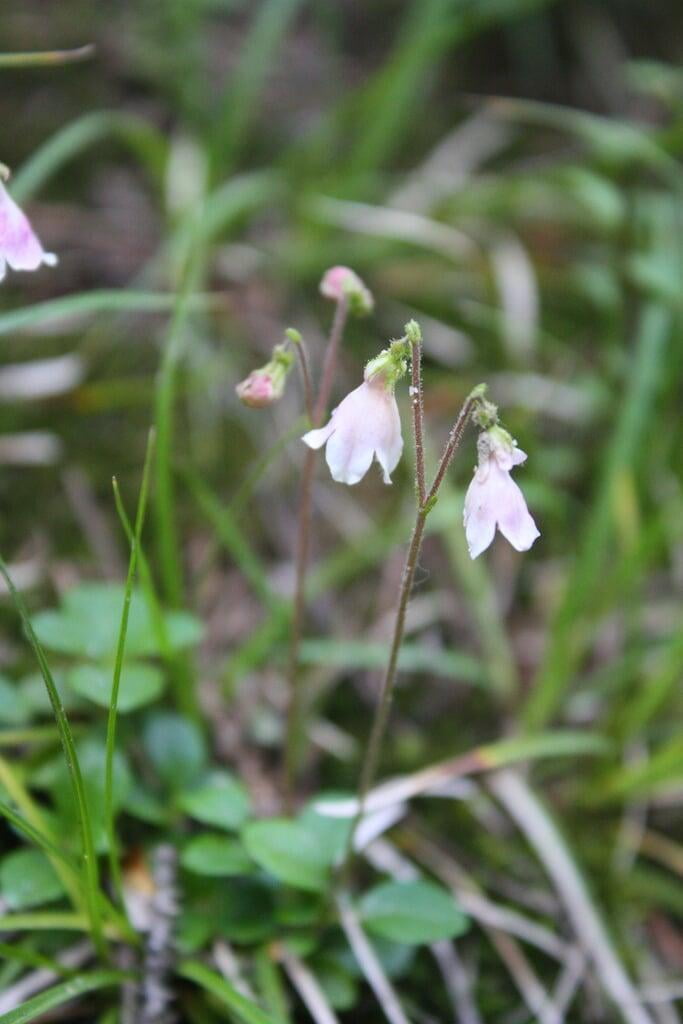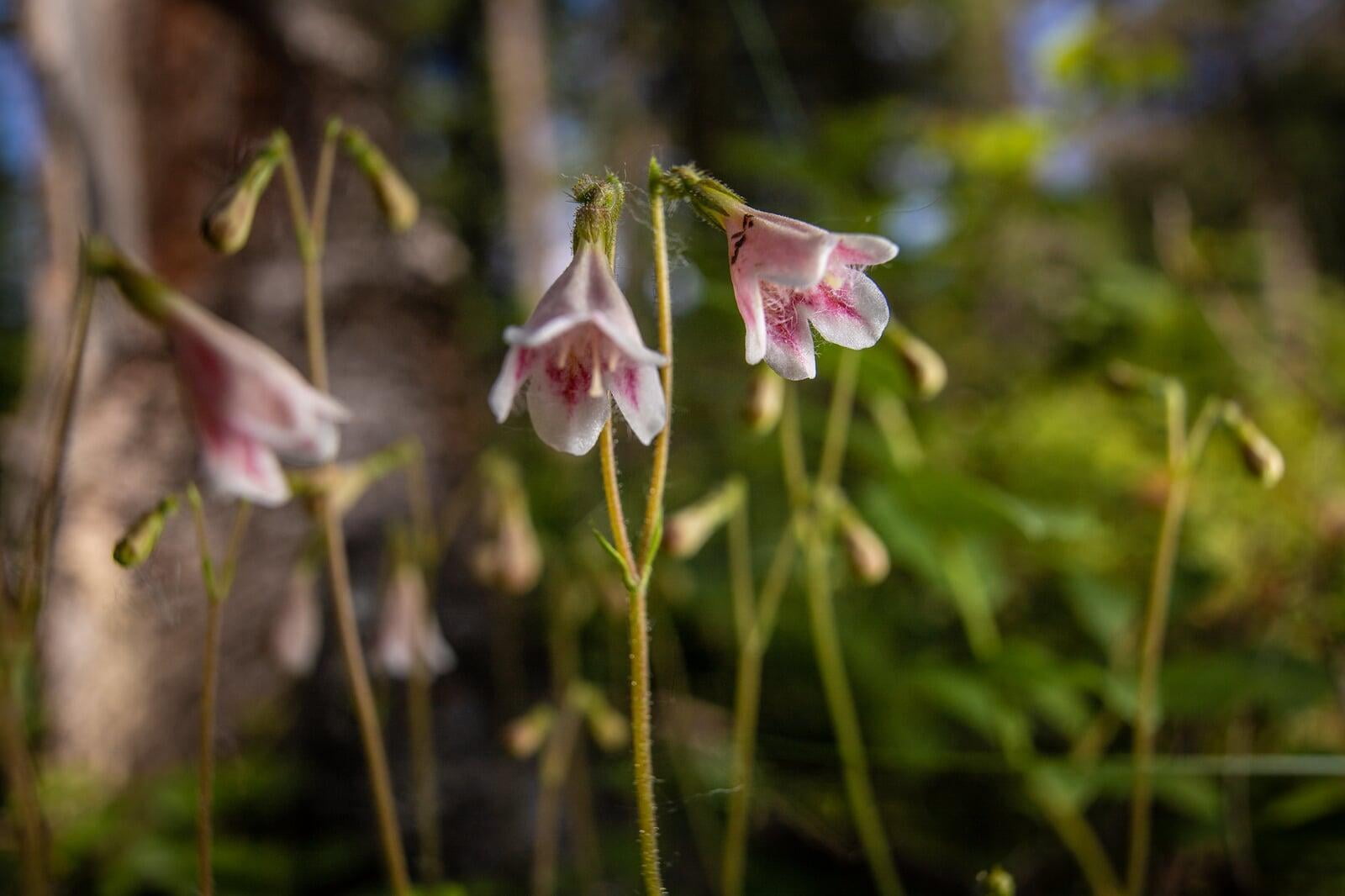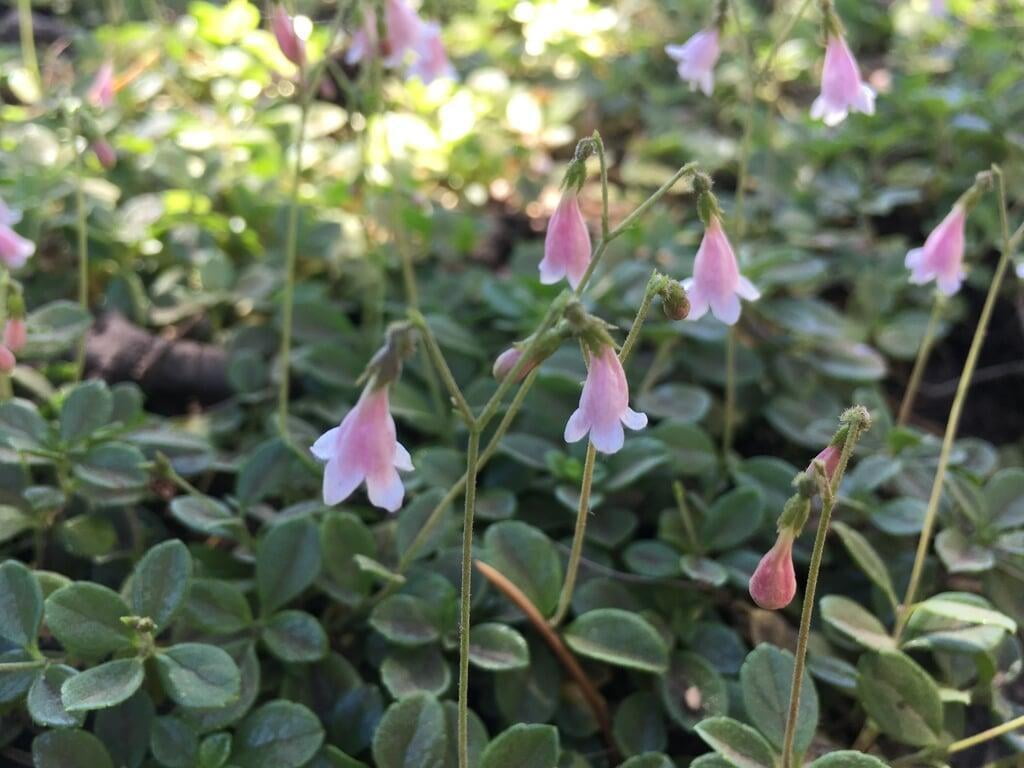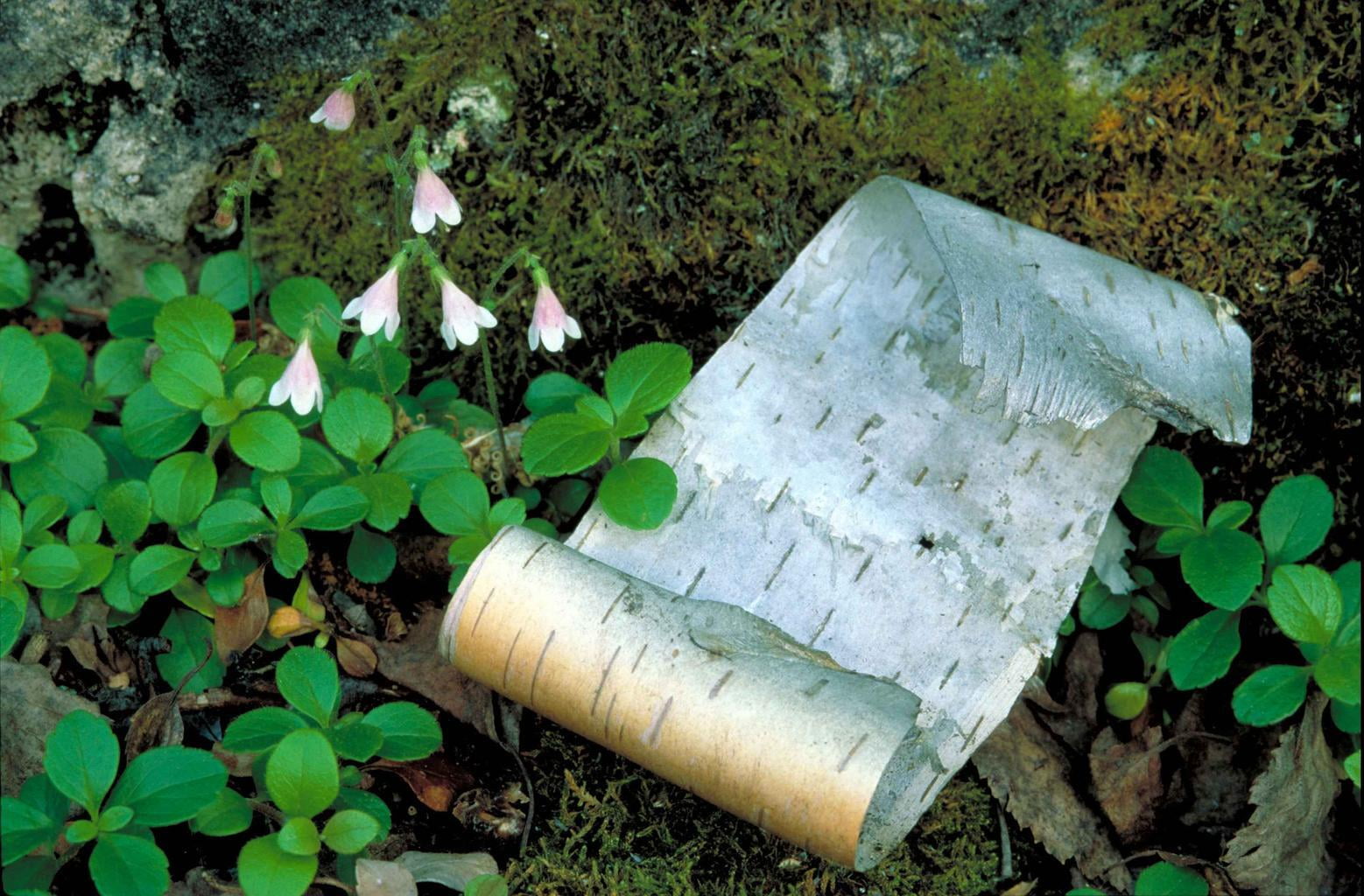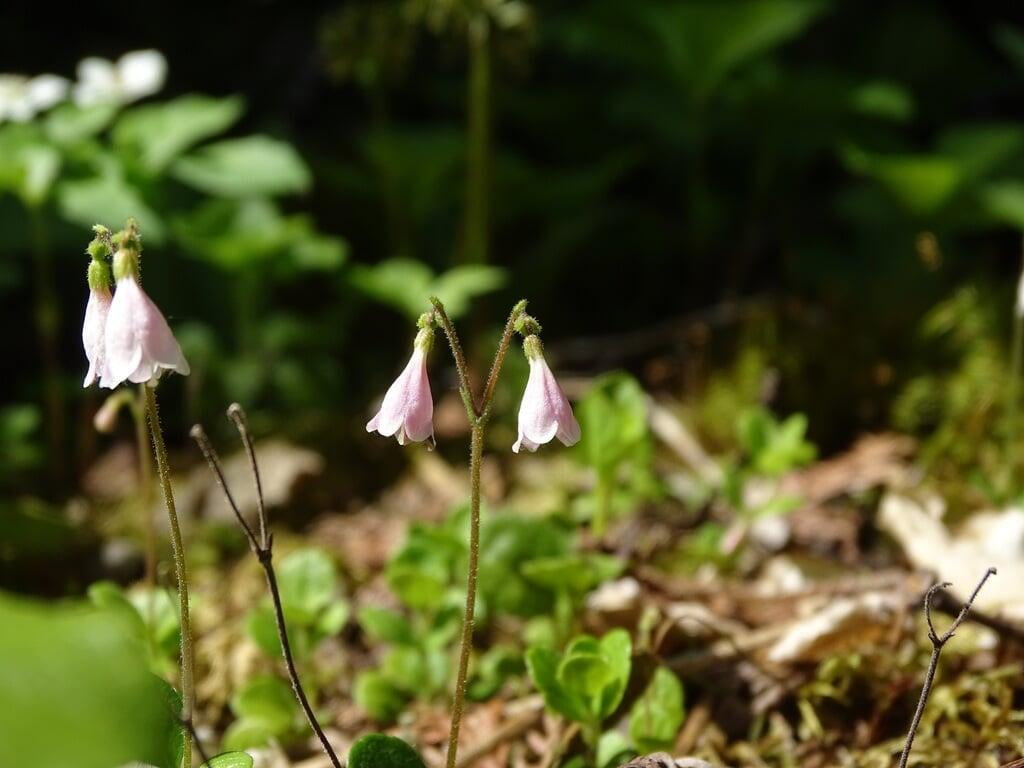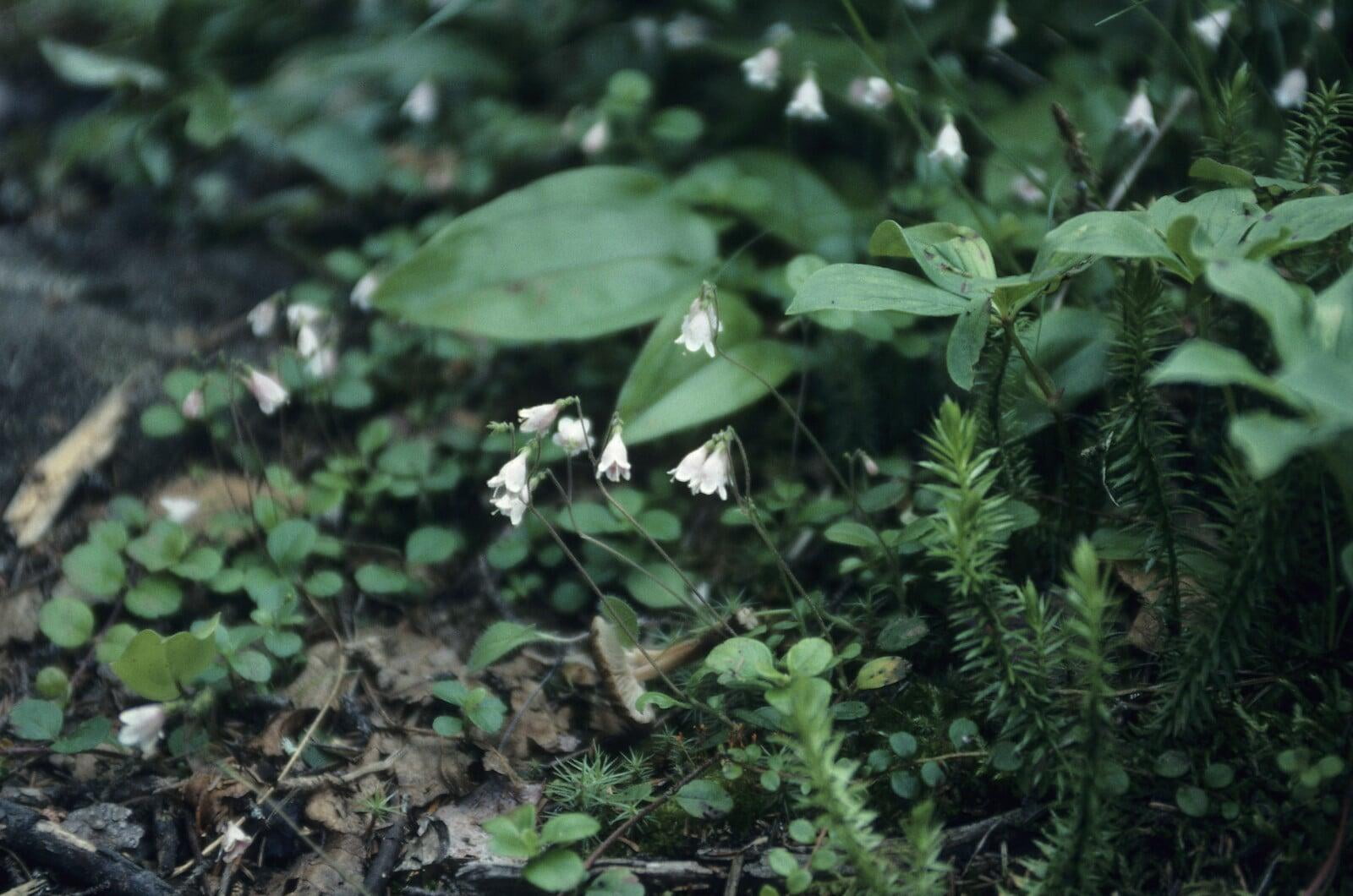Linnaea borealis
Twin flower Description:
Linnaea borealis, commonly known as twinflower or American twinflower, is a creeping ground cover plant that is native to woodland and forest environments in the northern hemisphere. It belongs to the Caprifoliaceae family and is named after the Swedish botanist Carl Linnaeus.
The twinflower is a low-growing, trailing plant that typically reaches heights of 3 - 6 inches. It produces small, delicate, pink or white bell-shaped flowers that are about 1 cm (0.4 inches) long and occur in pairs on thin stems. The flowers are fragrant and attract a variety of pollinators, including bees and butterflies.
The twinflower is a circumpolar plant, meaning that it is found in the northern regions of North America. It is commonly found in alpine and boreal forests and is known for its hardiness and adaptability to a variety of environmental conditions.
In addition to its ornamental value, the twinflower has a long history of use in traditional herbal medicine. The plant has been used to treat a variety of ailments, including colds, coughs, and digestive issues. Today, the twinflower is also used in gardening and landscaping as a ground cover, where it adds a touch of wildness and a delicate beauty to any outdoor space.
The twinflower is also an important plant for conservation, as it provides critical habitat for a variety of wildlife species. Efforts are being made to protect and preserve the twinflower's natural habitat and ensure the survival of this important plant species.
Native Range:
Twin flower is found in central and Northern Minnesota. More broadly, it can be found in the Northeastern and Western United States.
Standard Plant Information:
Plant Height: 3" - 6" inches
Bloom Time: June - August
Preferred Habitat: Does well in part shade to shade. Often found in cooler, more northern forests.
Sowing:
For most homeowners, the best option is to scatter seed on the ground by hand broadcasting at a minimum of 16-64 pls ounces per acre. For even coverage, we recommend that you broadcast seed in perpendicular rows across the site to ensure even coverage.
You’ll want to broadcast any grass seed first, which will get raked into the soil lightly. Next, it is ideal to mulch the area lightly with either a clean (no seed) straw or preferably with our native Little Bluestem straw, sold at our retail garden centers. After a light mulching is complete, now it’s time to broadcast your native wildflower seeds, which should not be raked into the soil. A good rain or watering is sufficient to cover the seed.
Planting:
Simply dig a hole in the soil slightly larger than the plant’s roots. Ensure that the soil line of the plant is maintained during the transfer (i.e. the plant should be at the same level with the ground as it was in the pot). Pack any loose dirt back around the plant and make sure you water it well the same day to ensure it has the best chance of survival.

